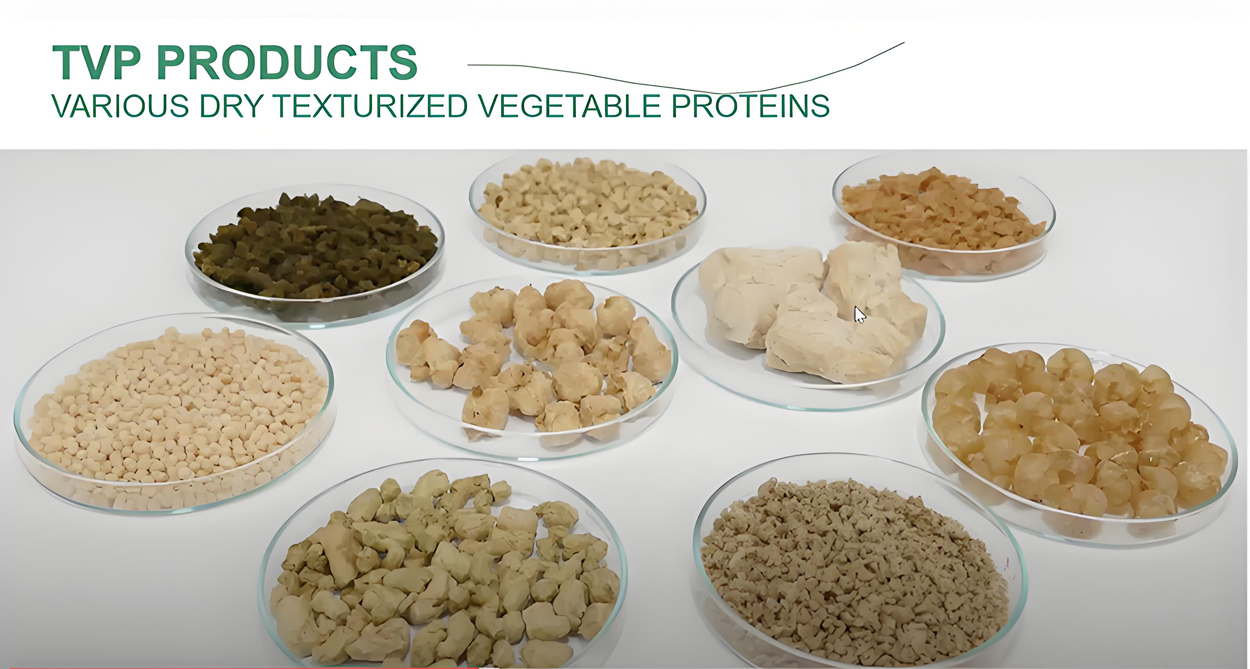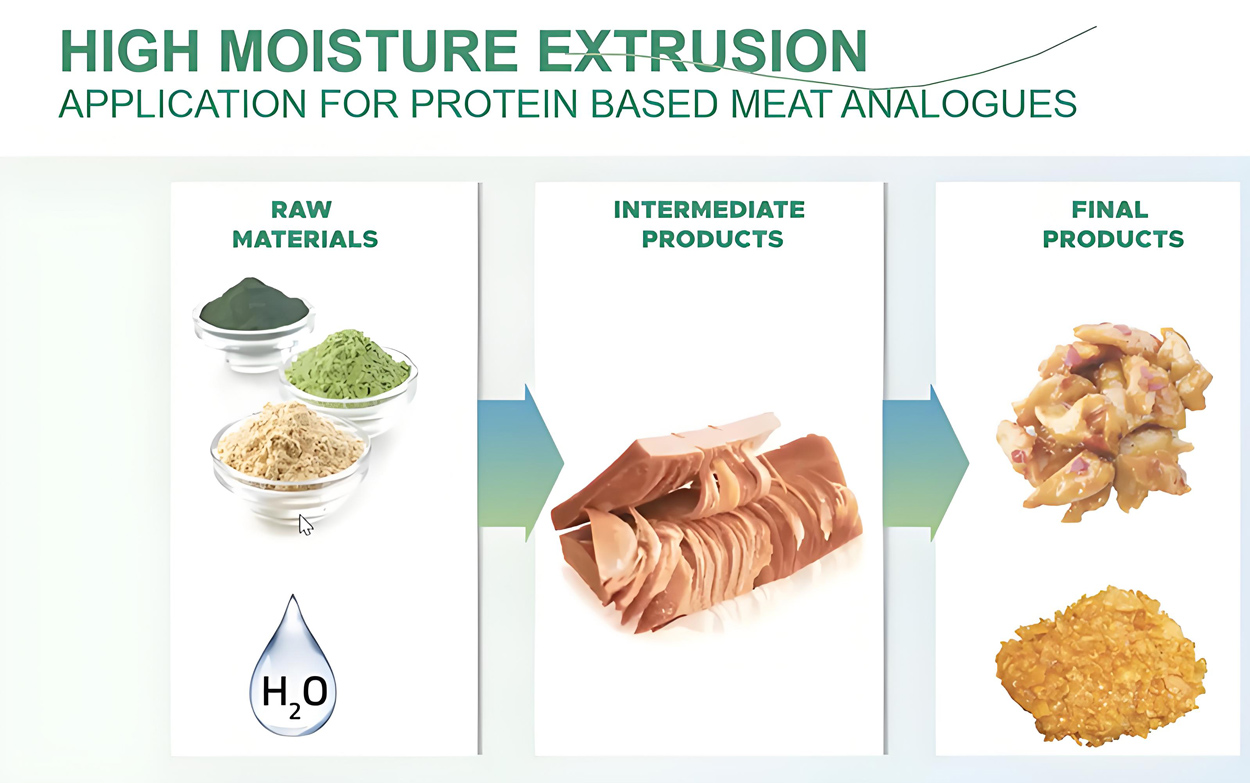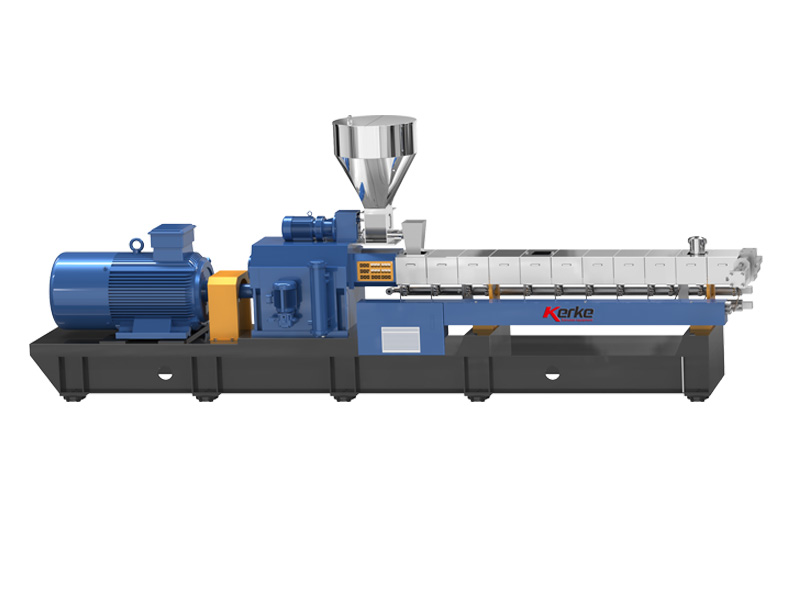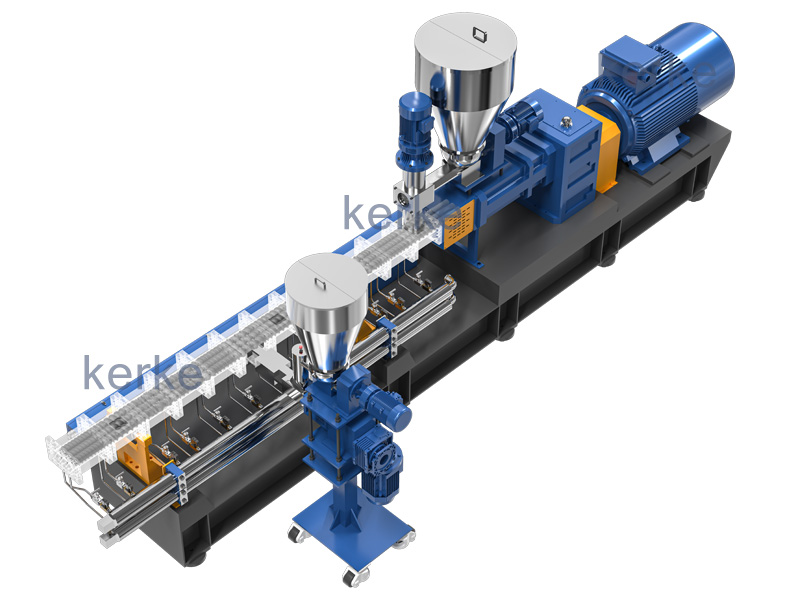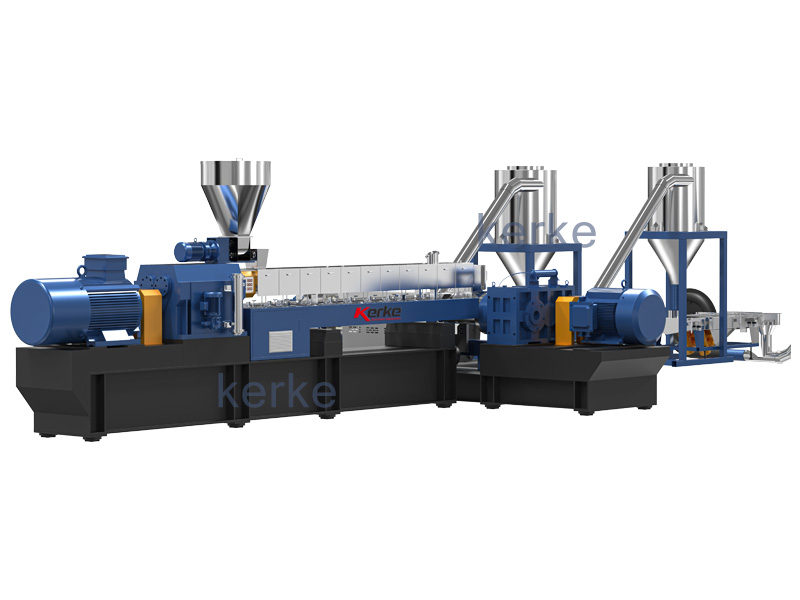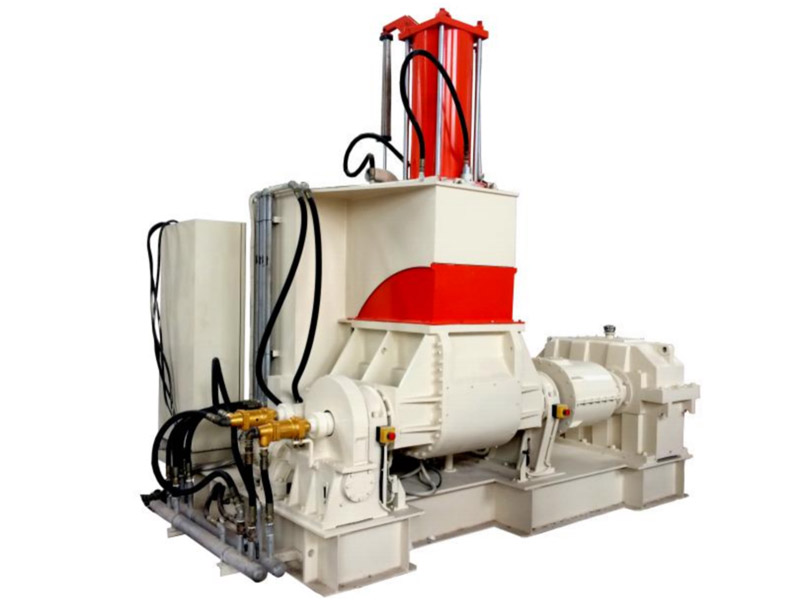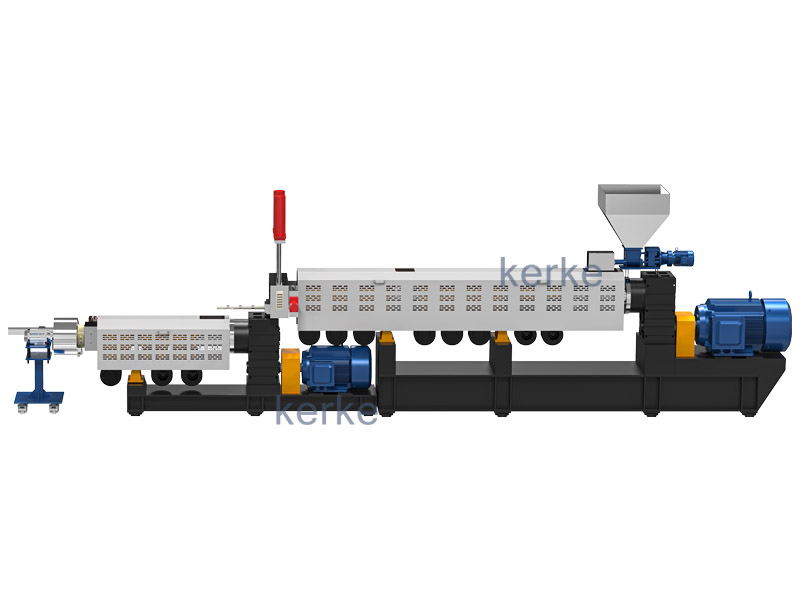Extrusion is the process used for producing HMMA. A Co-rotating Twin-screw Extruder is preferable to produce HMMA and is made with proper concentrations of SP with plant proteins or with MA, with high moisture levels. However, the water preferably @ 70 C needs to be introduced online into the Extruder just ahead of the Feeding zone through accurate Dosing Piston pumps. Further 2 separate feeders are necessary, one each for SP and MA or other plant proteins, because the degree of loading greatly affects the final texture and properties of HMMA. It is found, that, increasing levels of MA also influence the texturization and elastic properties which need to be compensated by reducing the moisture levels to maintain the required texture and strength of HMMA. Inside the Extruder, products are maintained from a 20-170C tempt gradient through various zones.
The twin screw extruder, due to its co-rotating action will knead, mix and further cook the ingredients by Thermomechanical processing, heat being supplied by external heaters plus the generation of adiabatic heat due to mechanical shear provided to raw materials. The Texturisation zone, or the Die (Slot die) provides not only to shape the product but also gives characteristic texture to the product by cooling down and inducing texturisation by maintaining temptation to<100C at exit. The flat product can be cut as a sheet or into cubes, vacuum-packed, and stored at low temperatures.
